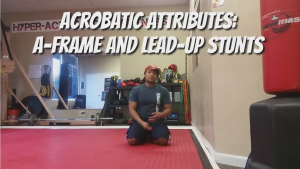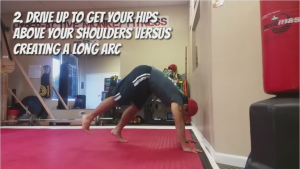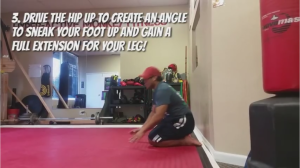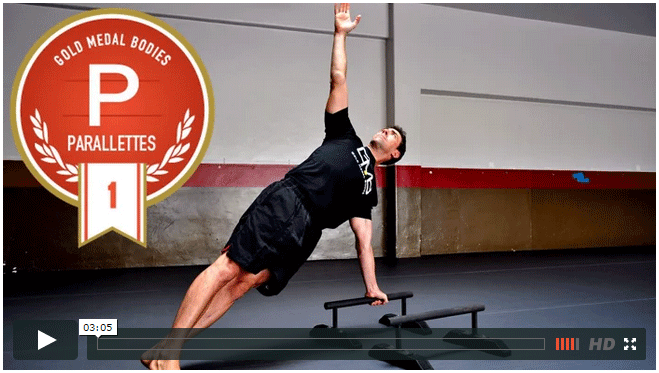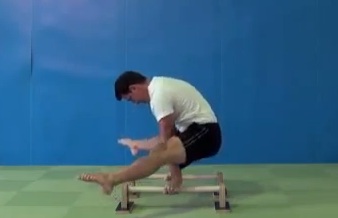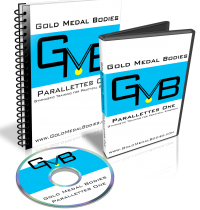When you first try a handstand, there are just so many things to think about. Your hand and shoulder position, where to direct pressure through your hands, hip and leg positioning, and every other detail from head to toe.
With all the things you have to think about in the handstand, it’s pretty easy to forget about your breathing, and the tendency is to hold your breath. Well, that’s not a great idea. Along with raising blood pressure there is a chance – albeit small – of passing out when you hold your breath.
Obviously, passing out when you are upside down is not good!
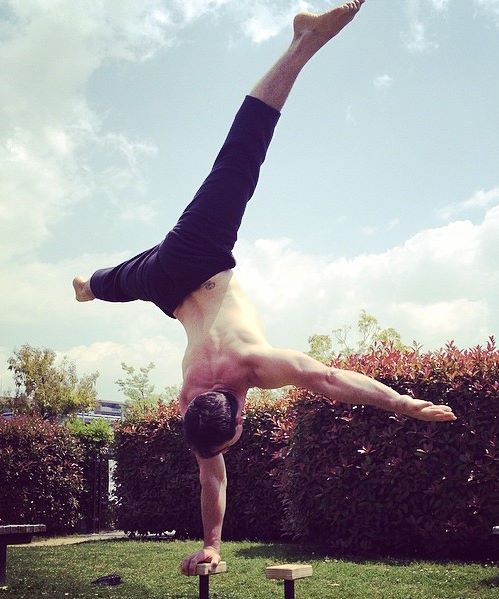
Ryan Hurst doing a One Hand Handstand on canes.
Holding your breath is a natural habit though, especially in difficult exercises that require a lot of concentration. The handstand certainly qualifies as that kind of exercise.
In the video below I talk a bit about how I monitor my clients and teach them how to avoid holding their breath. It’s definitely best to have a coach or training partner right there to give you cues and help you, but even if you don’t have someone available, the techniques I’ll share with you can be immediately applied in your practice.
Signs You May Be Holding Your Breath
We receive a lot of different questions from our training clients, and one of the more common issues when people start practicing handstands is a feeling of increased pressure in the head and around the eyes.
Some of this pressure is just a minor phenomena that changes for the better with more practice and improved technique, but breath holding is a very likely culprit.
You also may notice fatiguing much more quickly than your current level of conditioning would indicate. Holding your breath while muscles are actively working is not just dangerous, but it will also decrease your performance. Hard working muscles require the increased oxygen intake and carbon dioxide expulsion to work properly and well.
Also common are sensations of lightheadedness and dizziness. I shouldn’t need to tell you this is a bad thing to happen when you are upside down practicing handstands.
Another sign is that when you end a set you hear yourself loudly exhaling. The exhale was loud because you were keeping your air by holding your breath.
How To Keep Breathing
One of the techniques I use with my clients is to simply engage in conversation with them. It’s impossible to be holding your breath and talking at the same time. Along with keeping them breathing and alive (kind of important), it also helps them to focus on just a few points at a time. This is important, not just for the handstand, but also when doing other exercises that require a lot of concentration and practice.
Another way I keep my clients breathing is by having them recite a favorite phrase, or something like the alphabet, over and over again. It might be a bit boring, but it gets the job done.
Other Tactics for Smoother Breathing in Your Handstand Practice
Treat handstands as a skill, not as an exercise in which to get tired!
The key to improvement in a skill is consistent practice with as good technique as you can muster. If you keep pushing into fatigue too often, you may end up ingraining poor form.
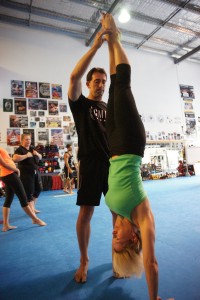
Ryan teaching body alignment in the handstand
End the set when your breathing becomes labored and then try again when you’ve caught your breath and can control it.
These basic but important strategies for breath control in a handstand will keep your practice safe, consistent, and successful.
Author Bio
Ryan Hurst is the Program Director for GMB Fitness, with over 20 years of experience in strength and movement coaching. He holds black belts in Kendo, Judo, and Shorinji Kempo, and he practiced for 10 years as a competitive gymnast. These days, Ryan spends most of his time playing with his kids and helping others move better.

